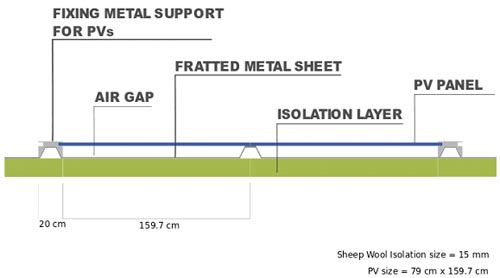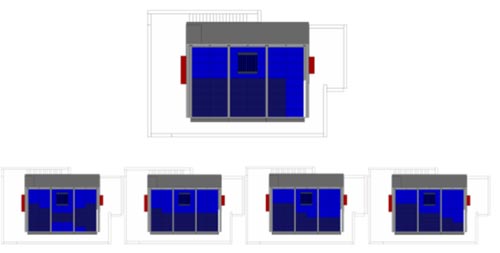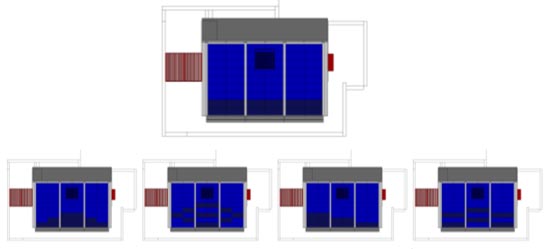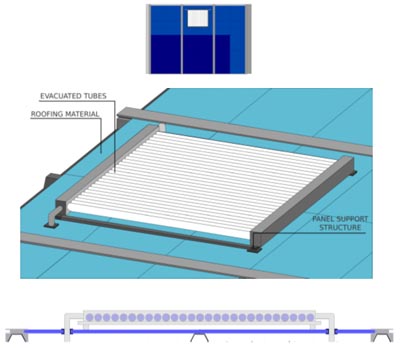BIPV System (Building Integrating Photovoltaic) The integration of PVs into the structure has been developed starting from the modular structure of the roof. In doing so, PV modules have been collocated into the main roof structure replacing roof materials (tiles or type of panels). This naturally reduces costs. From the construction point of view, BIPVs increase a building's value. Roof weight is reduced and there is an insulation improvement potential. Main issue regarding BIPVs is their actual physical integration into the roof structure bearing in mind that an air gap was required in order to avoid overheating of: cells (possible efficiency drop) and indoor environment. Firstly, regarding the roof system, a structure has been designed to accommodate PVs and insulated materials. In doing so, the solution adopted regards the introduction of a fratted metal sheet just above the insulation layer and a fixing metal support (see picture below) that allow inserting modules and maintain a uniform roof pattern. In fact, the rest of the roof area, is covered by roof cladding panels that have the same thickness as PVs in order to maintain similar modular structure and deliver a composed shape. As the BIPV system is directly installed within the building envelope, there are no longer requirements of external support, and in doing so the system is considered totally integrated.

Numerous alternatives in the way modules can be connected have been illustrated. Concerning this project panels are attached to each other.
From simulation result data converted to the requirements of our dwellings' dimensions in order to cover Glasgow electrical demand (2954 kWh/yr) the system requires 25 panels with a size of 1587mm * 790mm * 50mm located into 5 rows and columns that cover an area of 31.343 m2. In Palermo the energy demand is lower (2294 kWh/yr) requiring 12 panels with a size of 1587mm * 790mm * 50mm located into 2 rows and 6 columns covering an area of 15.045 m2.


Solar Collectors' Integration
The developed hybrid energy system includes also the integration of solar collectors into the roof to partially meet domestic hot water thermal demand for the single dwelling. The best size of solar collector considered was (1760 x 2170 x 130 mm) which requires an area of 3 m2. With the southern orientation and proper inclination angle the collector will absorb a solar irradiation of about 950 kWh/ m2/yr in Glasgow and 1950 kWh/ m2 /yr in Palermo. The type of panel chosen is an evacuated tube solar collector making it harder to integrate on the roof. The collector consists of evacuated tubes that must be installed on the top layer of the roof in order to let the rain (or/and snow) pass through it. That is why actual integration as part of the roof's structure was not possible (collectors were installed above it). Collector panels have been situated on the higher part of the roof to avoid risk of shading part of PV panels in some hours of the day.

| 